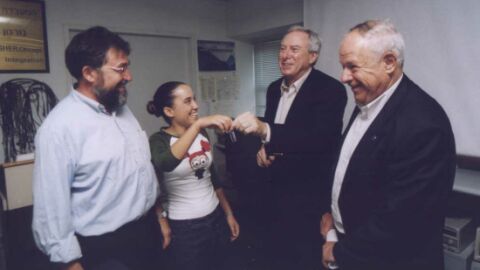The Director of the Israel Space Agency, Avi Har-Evan, explains that the problem at NASA was that as long as nothing serious happened, they kept going despite the shrinking budgets (13 percent in a decade), and the cuts in personnel (from 32 thousand to 19 thousand employees) , in the face of the pressures to realize big plans such as the establishment of an international space station and the shuttle flights

By Avi Har Evan
The Columbia disaster report illustrates a conflict that exists in every huge and complex project, especially in space flight: in the face of operational and budgetary requirements and in the face of a tough and tight schedule, very strict safety requirements must be met, requirements that must not be compromised in any way.
The problem at NASA was that as long as nothing serious happened, they kept going despite the shrinking budgets (13 percent in a decade), and the cuts in personnel (from 32 to 19 employees), in the face of the pressures to realize big plans such as the establishment of an international space station and flights the shuttle.
The outdated shuttles were built in the early 80s and needed to be upgraded, but NASA planned to operate the shuttles for at least another ten years. The American approach until now has been that as long as something works properly, do not change or replace. This attitude will have to change.
The technical reasons for the disaster were known and in this respect the report does not innovate much. On the other hand, he refers extensively to the great importance of real-time information about faults, which was lacking in the days before the disaster. The report emphasizes the importance of transmitting filmed data from space continuously, without waiting for the shuttle to land with the filmed material.
NASA will now have to institute a "sieve with many holes" regarding alerts from mid-level experts. An expert at a high technical level will have to sit in the control room who will know how to interpret every warning that comes from the engineers and make a real assessment of every warning.
As the head of NASA expressed, the space agency will serve as a "road map" for its return to activity. The shuttle flights will probably only resume in the beginning of spring 2004. First priority, in my estimation, will be given to catching up with the delay in the construction of the International Space Station. I estimate that our relationship with NASA will not change following the report. The Minister of Science said yesterday that Israel is determined to continue sending astronauts into space, and I believe that in light of President Bush's promises to the Prime Minister, cooperation with the US in the space programs will not go wrong, on the contrary.
When NASA re-enters operations, we will publish a call to the scientific authorities in Israel, to propose ideas for experiments that will be carried out for Israel and by the next Israeli astronaut. It doesn't seem to me that we will have a second representative in space in the next three years, but it is possible that the next Israeli astronaut will even participate in an operation related to the space station, not just a research flight.
Avi Har-Evan is the CEO of the Israel Space Agency (ISA)
